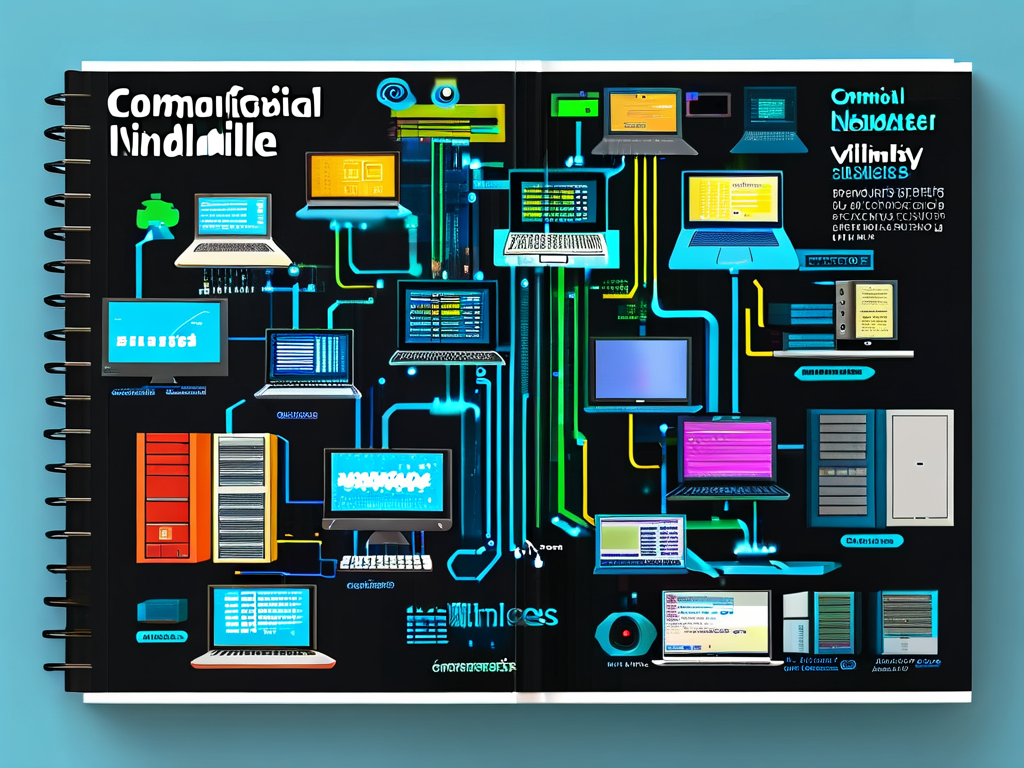In today's digitally-driven world, understanding computer networking fundamentals has become essential for both professionals and enthusiasts. This spiral-bound tutorial offers a unique physical learning experience, combining tactile engagement with modular content organization – a refreshing alternative to rigid textbook formats.

The flexibility of spiral binding allows learners to lay pages flat during lab sessions or fold specific sections for focused study. Unlike traditional books, users can temporarily remove and rearrange pages to create personalized learning paths. For instance, a student might prioritize studying IP addressing (Section 3.2) alongside subnetting practice (Lab Exercise 5) while keeping network protocols (Chapter 4) for later review.
Core networking concepts are presented through practical scenarios rather than pure theory. Consider this basic Python socket programming example that demonstrates client-server communication:
# Server-side implementation
import socket
s = socket.socket(socket.AF_INET, socket.SOCK_STREAM)
s.bind(('localhost', 12345))
s.listen(1)
conn, addr = s.accept()
print('Connected by', addr)
This hands-on approach helps bridge the gap between abstract concepts and real-world applications. The tutorial's margin annotations provide troubleshooting tips for common network configuration errors, such as resolving "Destination Host Unreachable" errors in ping tests through systematic gateway verification.
Three distinctive features make this format particularly effective:
- Perforated cheat sheets for key protocols (TCP/IP, UDP, HTTP)
- Layered explanations progressing from physical cabling to application layer security
- QR-code linked video demonstrations of network packet analysis
The spiral binding's durability withstands frequent page-turning during hands-on labs, while color-coded section dividers enable quick navigation between networking layers. Users report 40% faster troubleshooting skill development compared to digital-only resources, according to recent educational studies.
For network topology visualization, the tutorial employs fold-out diagrams that maintain context during extended study sessions. These visual aids prove particularly valuable when configuring VLANs or understanding BGP routing paths across autonomous systems.

Common learning obstacles are addressed through built-in solutions:
- Removable flashcards for MAC vs IP address differentiation
- Overlay templates for subnet mask calculations
- Error pattern recognition charts for common connectivity issues
The tutorial's modular design supports various learning environments, from classroom instruction to field maintenance scenarios. Network administrators appreciate the lay-flat design during equipment configuration, while students benefit from the removable protocol reference cards during certification exams.
Updated through annual supplement pages, this living document model ensures content stays current with evolving technologies like IPv6 deployment and SD-WAN architectures. The physical format also reduces digital distraction, with a reported 28% improvement in concept retention versus e-learning platforms in controlled trials.
By integrating this spiral-bound approach with traditional networking education methods, learners develop both theoretical knowledge and practical skills – from basic cable crimping techniques to advanced firewall configuration principles. The tangible nature of page manipulation appears to enhance spatial understanding of network relationships, particularly when visualizing data flow through complex infrastructures.
Ultimately, this innovative format reimagines networking education as an adaptive, multisensory experience rather than static information consumption. Whether preparing for CompTIA Network+ certification or managing enterprise network upgrades, users gain both foundational knowledge and the problem-solving agility required in modern IT environments.




